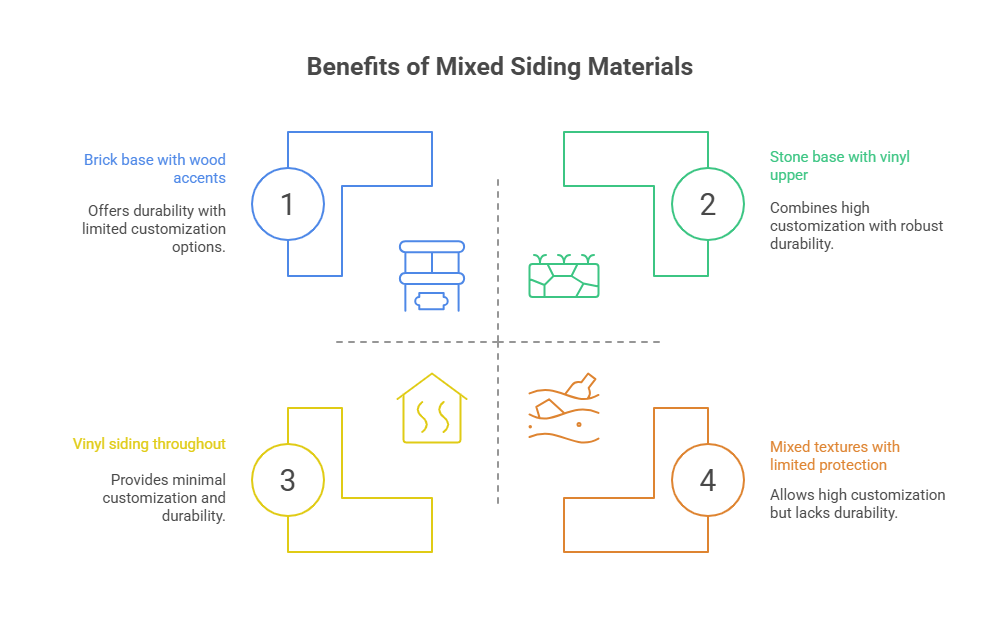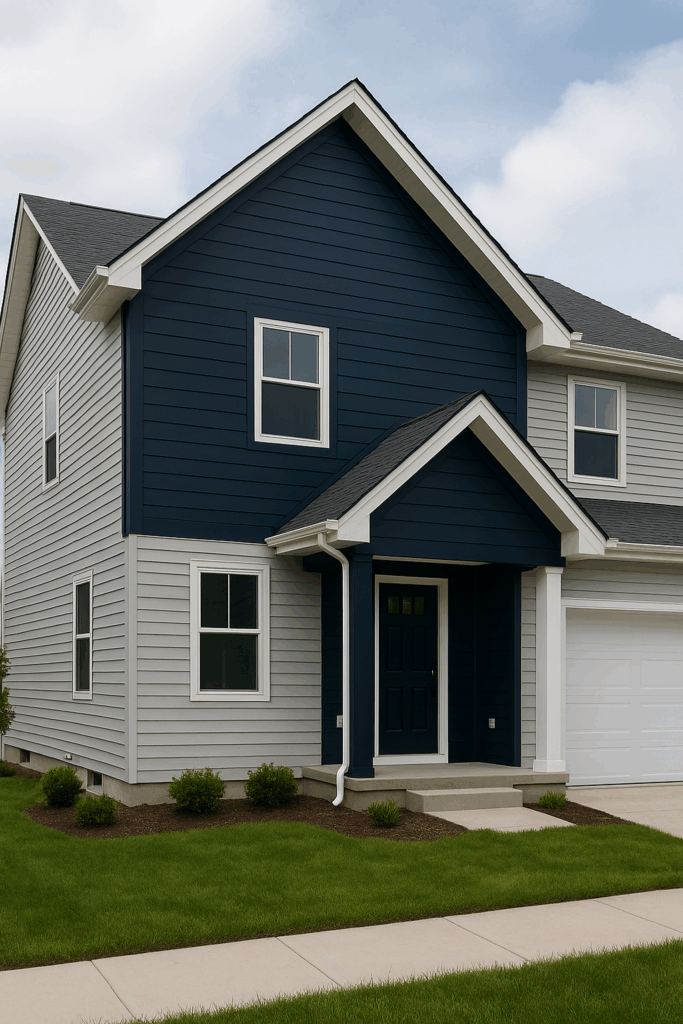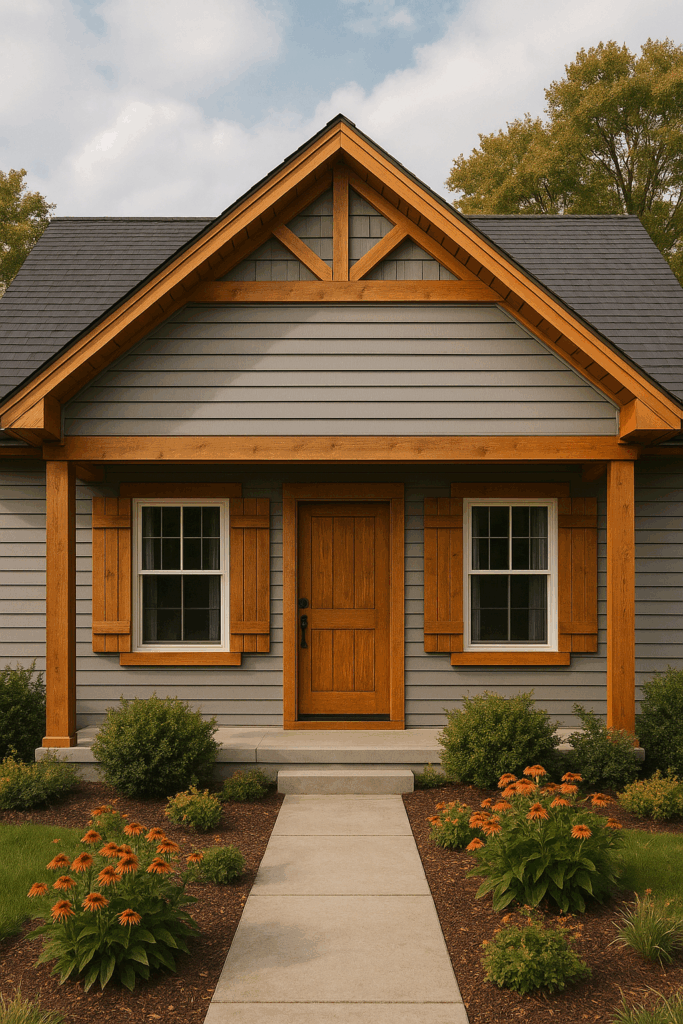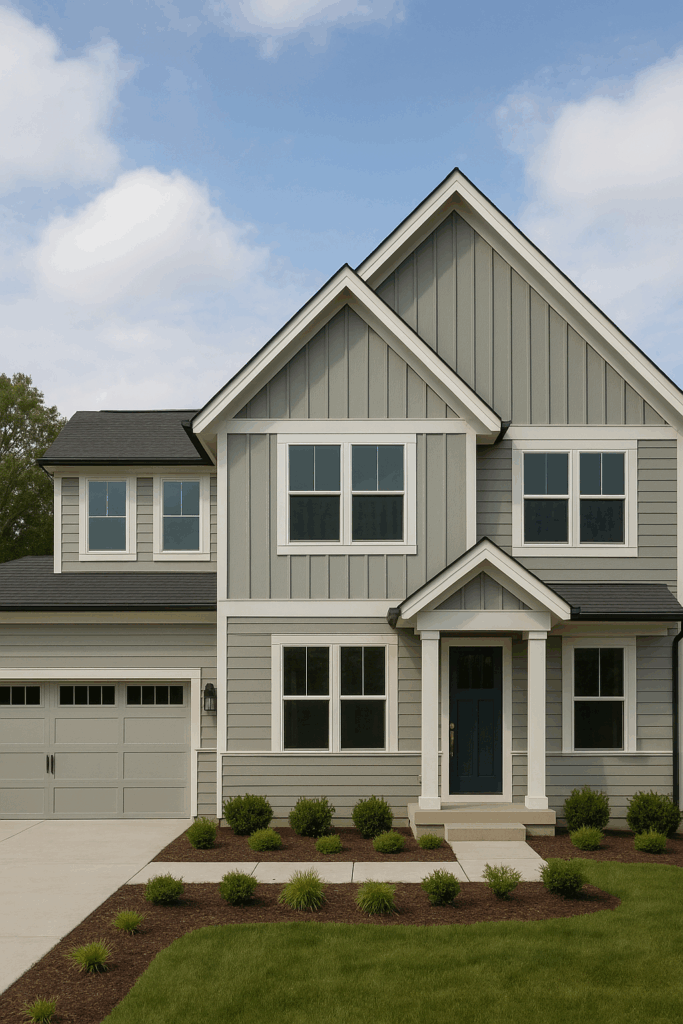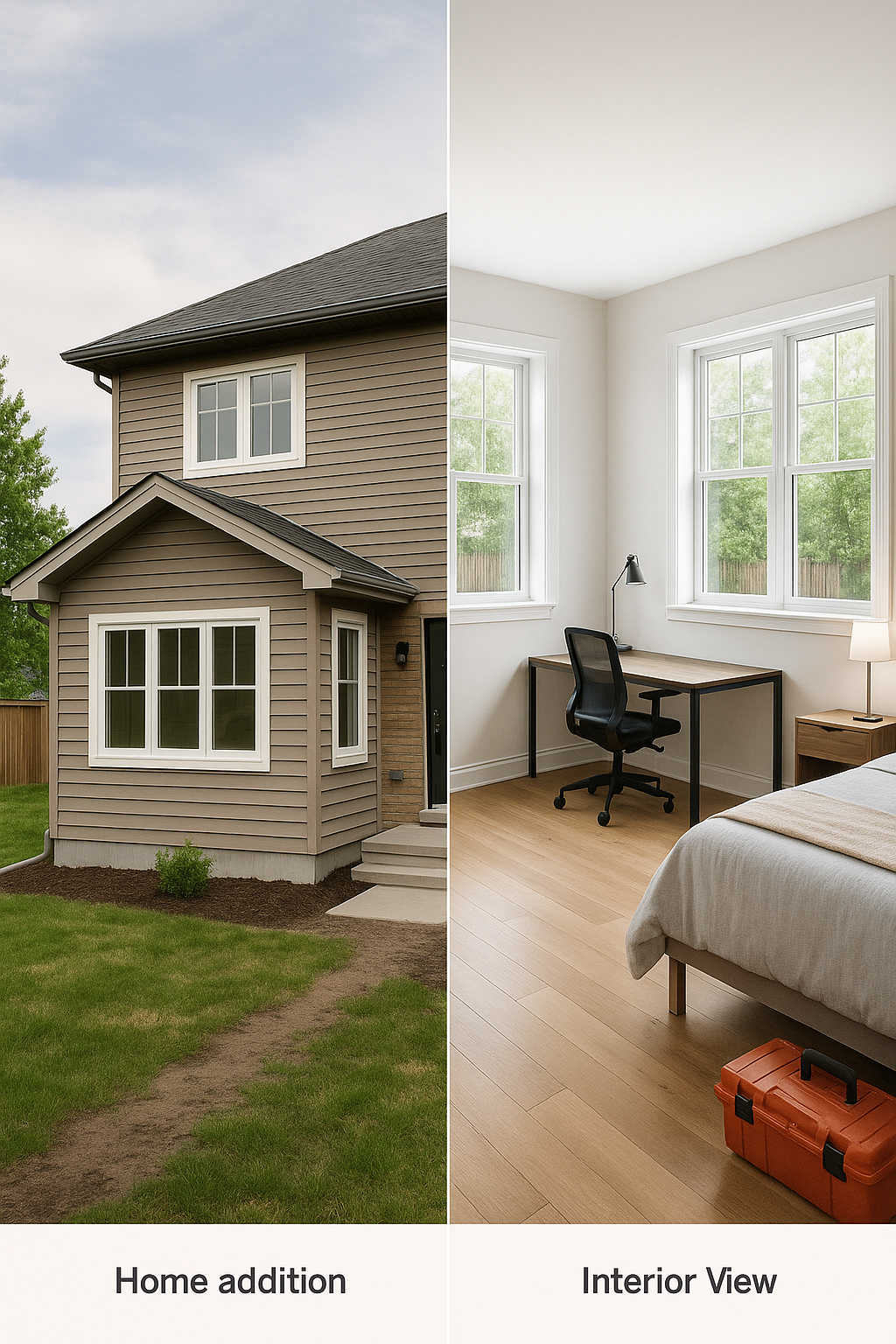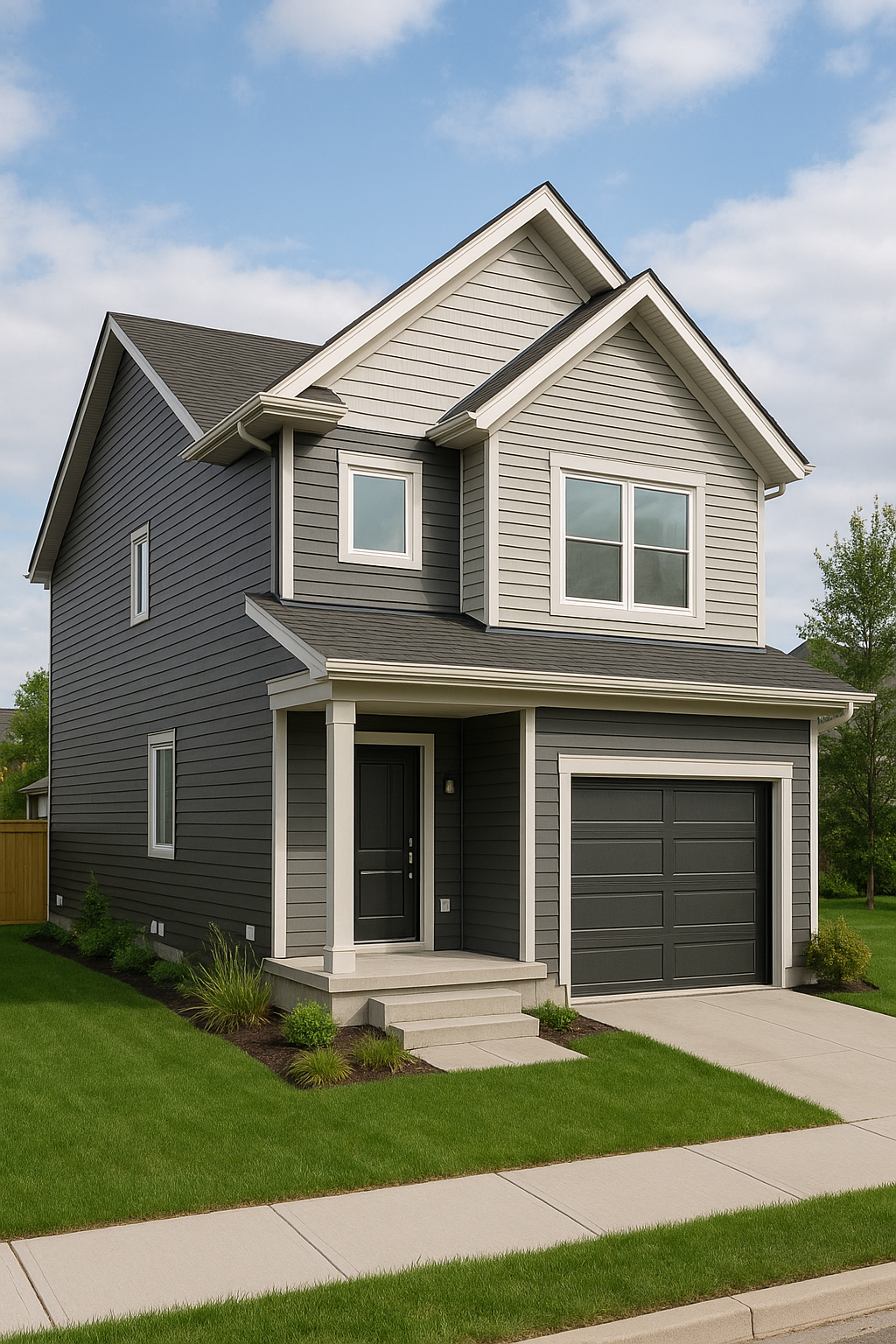When it comes to enhancing the exterior of your home, the choice of siding materials can significantly impact both aesthetics and functionality. Mixing siding materials has become a popular trend among homeowners looking to create unique and visually appealing facades. This article will explore how to effectively combine Celect, vinyl, and wood accents to achieve a stunning exterior that reflects your personal style.
Key Takeaways
- Mixing siding materials enhances curb appeal by combining different textures, colors, and finishes for a more dynamic and personalized exterior.
- Combining Celect and vinyl siding balances durability with cost-effectiveness while offering a clean, cohesive look.
- Vinyl siding paired with wood accents adds warmth and charm, ideal for creating a cottage-style or rustic aesthetic.
- Using both vertical and horizontal siding can break up large walls and highlight architectural features.
- Establishing a focal point with distinctive materials (like wood or stone) helps draw attention to key areas such as entryways or bay windows.
- Maintaining balance and proportion in materials and placement is key to achieving a polished, harmonious appearance.
- Sticking to a coordinated color palette (dominant, secondary, and accent colors) ensures the mixed materials work together visually.
- Different materials expand and contract at different rates, so flexible joints and proper planning are essential to prevent warping or cracking.
- Proper weatherproofing, especially where vinyl meets wood, is critical to avoid moisture infiltration and long-term damage.
- Limiting your design to two or three materials prevents visual clutter and keeps the exterior design cohesive and attractive.
- Working with experienced siding contractors like NorthCo Services ensures professional installation and long-lasting results.
Benefits of Mixing Siding Materials
Enhanced Curb Appeal
One of the primary reasons homeowners opt for mixed siding materials is the dramatic boost in curb appeal. By combining different textures and colors, you can create a visually dynamic look that stands out in your neighborhood. For instance, pairing the sleek finish of vinyl siding with the rustic charm of wood accents can add depth and character to your home’s exterior.
Increased Durability
Mixing materials can also enhance the durability of your home’s exterior. For example, using stone or brick at the base of your home can protect against moisture and impact damage, while lighter materials like vinyl can be used higher up for a stylish finish. This strategic combination not only looks great but also provides a robust defense against the elements.
Customization and Personalization
Another significant advantage of mixing siding materials is the ability to customize your home’s appearance. With a variety of colors, textures, and profiles available, you can create a look that is uniquely yours. Whether you prefer a modern aesthetic or a more traditional style, the possibilities are endless when it comes to mixing siding materials.
Popular Combinations for Mixing Siding Materials
Celect Siding with Vinyl
Celect siding, known for its durability and low maintenance, pairs beautifully with vinyl siding. This combination allows homeowners to enjoy the benefits of both materials. Celect can be used for accent areas, such as gables or entryways, while vinyl can cover the main body of the house. This not only creates a cohesive look but also keeps costs manageable.
Vinyl and Wood Accents
Combining vinyl siding with wood accents is a classic choice that adds warmth and texture to your home. For instance, using vinyl for the majority of the exterior while incorporating wood trim around windows and doors can create a charming contrast. This combination is particularly effective in achieving a cozy, cottage-like feel.
Vertical and Horizontal Mixing
Mixing vertical and horizontal siding can create visual interest and break up large wall spaces. For example, you might choose horizontal vinyl siding for the lower portion of your home and vertical board-and-batten siding for the upper section. This approach not only adds dimension but also emphasizes the architectural features of your home.
Design Strategies for Mixing Siding Materials
Establish a Focal Point
When mixing siding materials, it’s essential to establish a focal point. Use a distinctive material, such as stone or wood, to draw attention to key architectural features like the front entryway or a bay window. This strategy helps create a balanced and harmonious look.
Maintain Balance and Proportion
To avoid overwhelming your home’s exterior, it’s crucial to maintain balance and proportion. Typically, heavier materials like stone should be used at the base, while lighter materials like vinyl can be applied higher up. This not only enhances the visual appeal but also ensures that the design feels cohesive.
Choose a Coordinated Color Palette
A unified color scheme is vital when mixing siding materials. Stick to complementary colors that enhance each other rather than clash. A good rule of thumb is to select a dominant color, a secondary color, and an accent color. This approach will help create a polished and sophisticated look.
Practical Tips for Successful Siding Installation
Work with Experienced Siding Contractors
When it comes to mixing siding materials, working with experienced siding contractors is essential. They can provide valuable insights into the best combinations for your home and ensure that the installation is done correctly. In Ottawa, for instance, there are many reputable siding contractors who specialize in mixed siding installations.
Contact NorthCo Services at 343-321-0527 for more information or to get a FREE estimate!
Plan for Expansion and Contraction
Different siding materials expand and contract at varying rates. It’s crucial to leave adequate space and use flexible joints to accommodate these movements. This will help prevent issues such as warping or cracking over time.
Prioritize Weatherproofing
Proper weatherproofing is essential when mixing siding materials. Use flashing and weather barriers to prevent water infiltration where different materials meet. This is particularly important for areas where wood and vinyl come together, as moisture can lead to deterioration.
Common Challenges and How to Overcome Them
Incompatible Materials
One of the challenges of mixing siding materials is ensuring compatibility. Some materials may require specific installation techniques that don’t work well with others. For example, certain siding types may need a rain screen, while others do not. Consulting with a professional can help you avoid these pitfalls.
Overwhelming Designs
Using too many materials or colors can create a cluttered appearance. To maintain a polished look, limit your design to two or three siding materials. This will help keep the overall aesthetic cohesive and visually appealing.
Installation Considerations
Proper installation is critical for ensuring that mixed materials fit together seamlessly. Hiring experienced siding contractors can help you navigate the complexities of installation and ensure that your project is a success.
Conclusion:
Mixing siding materials is an excellent way to enhance your home’s exterior while expressing your unique style. By combining Celect, vinyl, and wood accents, you can create a stunning facade that is both functional and beautiful. Remember to consider factors such as durability, aesthetics, and maintenance when selecting your materials.
If you’re ready to transform your home’s exterior with mixed siding materials, contact NorthCo Services at 343-321-0527 for more information or to get a FREE estimate! Our team of experts is here to help you every step of the way, ensuring that your vision becomes a reality.
FAQs
- What are the benefits of mixing different siding materials? Mixing siding materials can boost curb appeal, personalize your home’s exterior, and improve durability and energy efficiency. It allows for creative combinations of textures and colors, potentially increasing your property’s market value by up to 14%.
- How can I create a cohesive look when combining different siding materials? To create a cohesive look, balance vertical and horizontal siding, use trim to transition between materials, coordinate colors carefully, and highlight architectural features with accents. Stick to a maximum of 2-3 siding materials and a cohesive color palette to avoid overwhelming the eye.
- What are some popular siding material combinations? Popular combinations include Celect siding with wood accents for a modern look, and vinyl siding paired with wood for a rustic touch. Celect can be used as the primary siding with wood accents at entryways or focal points, while vinyl can be combined with vertical wood accents for contrast.
- How important is proper installation when mixing siding materials? Proper installation is crucial when mixing siding materials. It ensures durability, weather resistance, and visual appeal. Working with experienced contractors is essential, as they understand the challenges of integrating different materials and can ensure proper flashing, transitions, and weatherproofing.
- What should I consider when planning a mixed siding project? When planning a mixed siding project, consider the expansion and contraction rates of different materials, ensure texture compatibility, plan for proper insulation and weatherproofing, and think about how different materials will interact visually. It’s also important to balance your budget with your design vision and choose materials that complement your home’s architectural style.
